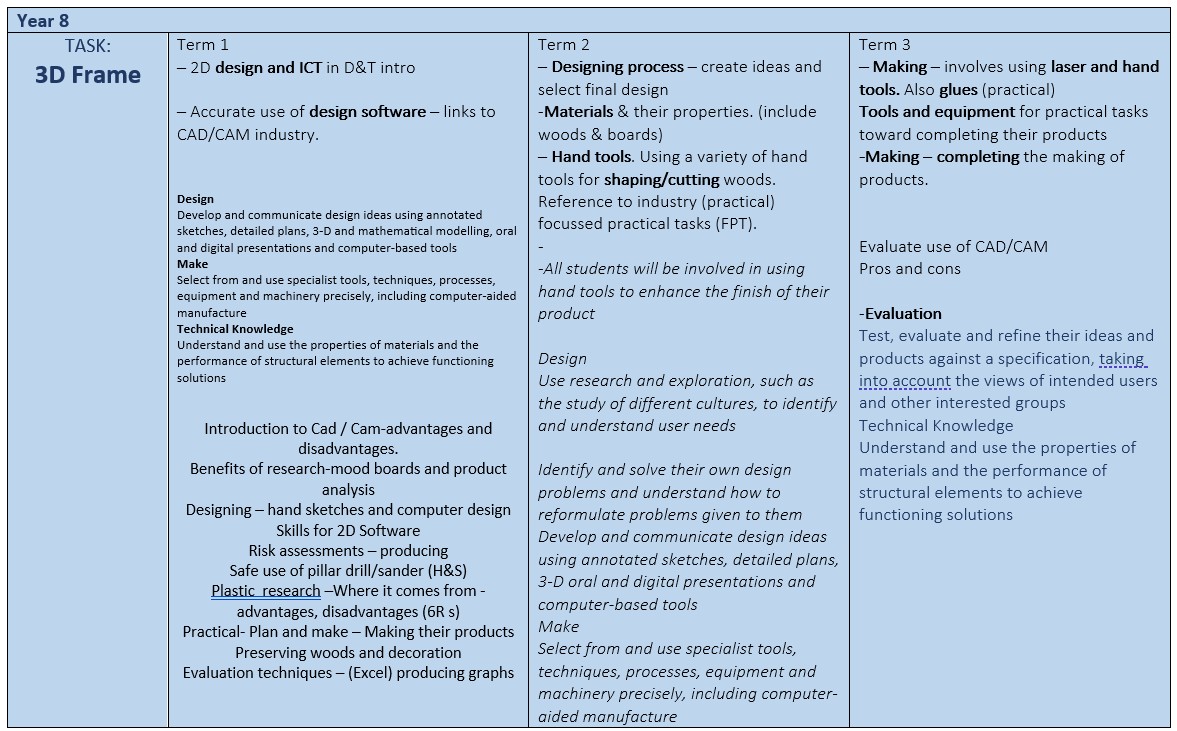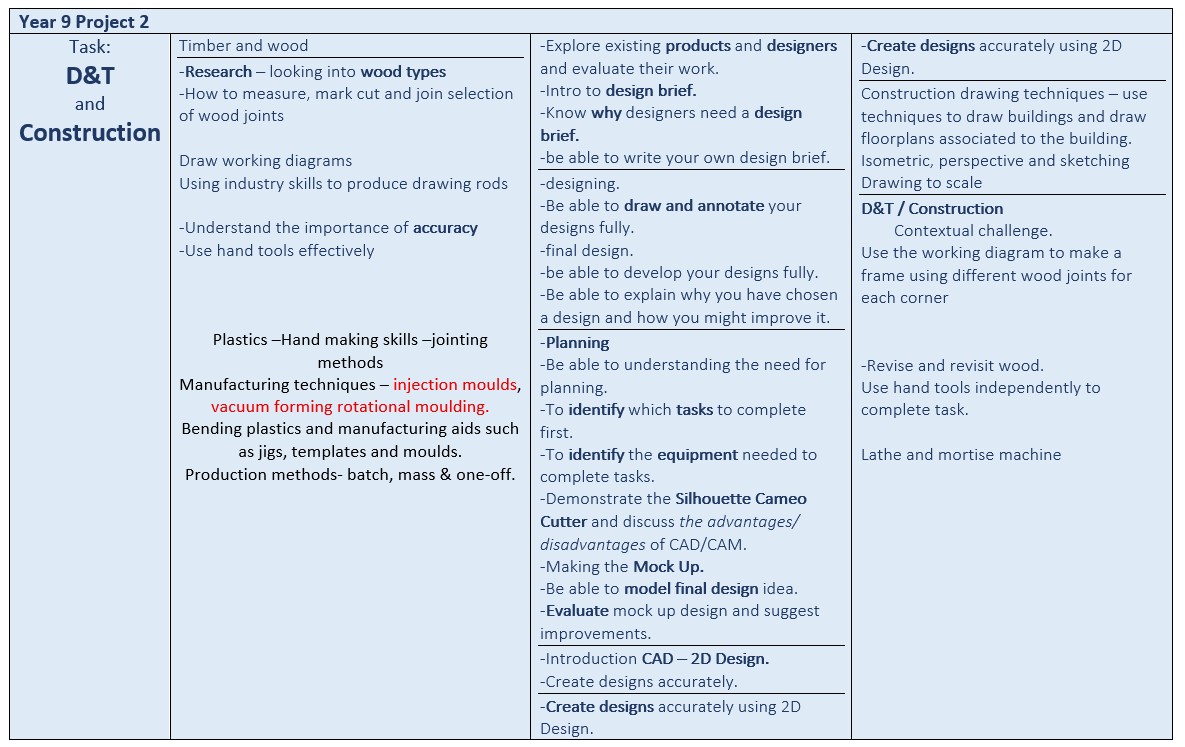Design and Technology at St Martin’s offers a unique opportunity in the curriculum for learners to identify and solve real problems by designing and making products or systems. As part of our design and technology curriculum children will be exposed to a broad range of subject knowledge and draw on disciplines such as mathematics, science, engineering, computing and art. Through studying GCSE Design and Technology, students will be prepared to participate confidently and successfully in an increasingly technological world; and be aware of wider influences on design and technology, including historical, social/cultural, environmental and economic factors.
The curriculum enables learners to work creatively when designing and making and apply technical and practical expertise in order to:
- develop the skills to critique and refine their own ideas whilst designing and making
- develop realistic design proposals as a result of the exploration of design opportunities and users’ needs, wants and values
- use imagination, experimentation and combine ideas when designing
- communicate their design ideas and decisions using different media and techniques, as appropriate for different audiences at key points in their designing
- develop decision making skills, including the planning and organisation of time and resources when managing their own project work
- develop a broad knowledge of materials, components and technologies and practical skills to develop high quality, imaginative and functional prototypes
- be ambitious and open to explore and take design risks in order to stretch the development of design proposals, avoiding clichéd or stereotypical responses
- demonstrate safe working practices in design and technology
- use key design and technology terminology including those related to: designing, innovation and communication; materials and technologies; making, manufacture and production; critiquing, values and ethics
RANGE & CONTENTS:
a: the curriculum should include they key areas of the D&T curriculum.
In each product area the study of designing should include understanding of:
b: Users needs and the problems arising from them;
c: the criteria used to judge the quality of products, including fitness for purpose, the extent to which they meet a clear need and whether resources have been used appropriately;
d: the impact of products beyond meeting their original purpose and how to assess products in terms of sustainability;
e: aesthetic, technical, constructional and relevant wider issues that may influence designing, selection of materials, making and product development;
The study of making in D&T should include:
A: a broad range of techniques, including handcraft skills and CAD/CAM, and how to use them to ensure consistency and precision when making single and multiple products;
B: the behaviour of structural elements in a variety of materials in how to use materials, smart materials, technology and aesthetic qualities to design and make products of worth;
C: how to prepare and assemble components to achieve functional results
YEAR 7

YEAR 8


YEAR 9

KEY PROCESSES:
During the key stage students will be offered the following opportunities that are integral to their learning and enhance their engagement with the concepts, processes and content of the subject. In way appropriate to the product area, the curriculum should provide opportunities for students to:
a: analyse products to learn how they function;
b: undertake focused tasks that develop knowledge, skills and understanding in relation to design and make assignments;
c: engage in design and make assignments in different and progressively more complex contexts, including for purposes and uses beyond the classroom;
d: work individually and in teams, taking on different roles and responsibilities;
e: Research or work with designers and makers where possible to develop an understanding of the product design process;
f: use ICT as appropriate for image capture and generation; data acquisition, capture and handling; controlling; and product realisation;
g: make links between design and technology and other subjects and areas of the curriculum;

